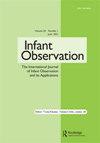Envy in the gaze
Q4 Psychology
引用次数: 0
Abstract
ABSTRACT The authors of this article explore the relationship between the cultural, unconscious and conscious dynamics in setting up infant observations in Delhi. The specific focus of the paper is the concept of ‘Nazar’, Evil eye, in India. The paper presents the experiences of a young woman observer in India, going in to observe an infant as a requirement of her psychotherapy training. The paper is an attempt to make sense of what happened five years ago in setting up the observation. It sheds light on how a cultural artefact such as ‘Nazar’ becomes a barrier to being able to undertake baby observation. The article also extends its understanding of what ‘Nazar’ can symbolise, both in the internal and the external world of both observer and observed. It goes on to explore the link between mother’s ambivalence both towards her child and towards the young female observer.羡慕的目光
本文的作者探讨了在德里建立婴儿观察的文化,无意识和有意识动态之间的关系。这篇论文的具体焦点是印度的“Nazar”,即邪恶之眼的概念。本文介绍了印度一位年轻女性观察员的经历,作为她心理治疗培训的要求,她要去观察一个婴儿。这篇论文试图弄清楚五年前建立这一观察时发生的事情。它揭示了像“拿撒尔”这样的文化文物如何成为能够进行婴儿观察的障碍。本文还扩展了对“拿撒尔”在观察者和被观察者的内部和外部世界中所象征的意义的理解。接着探讨了母亲对她的孩子和对年轻女性观察者的矛盾心理之间的联系。
本文章由计算机程序翻译,如有差异,请以英文原文为准。
求助全文
约1分钟内获得全文
求助全文

 求助内容:
求助内容: 应助结果提醒方式:
应助结果提醒方式:


